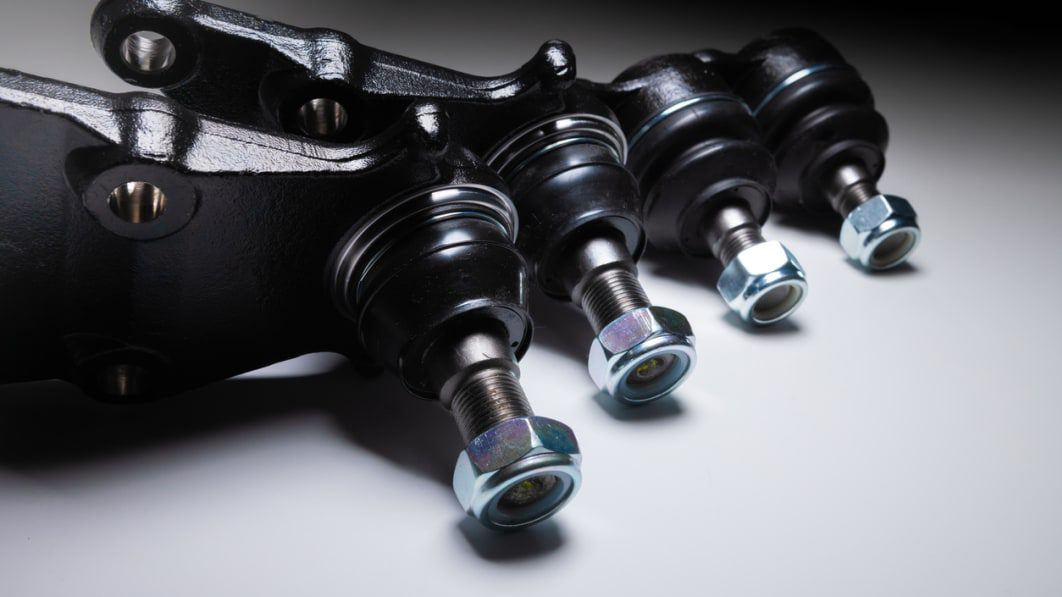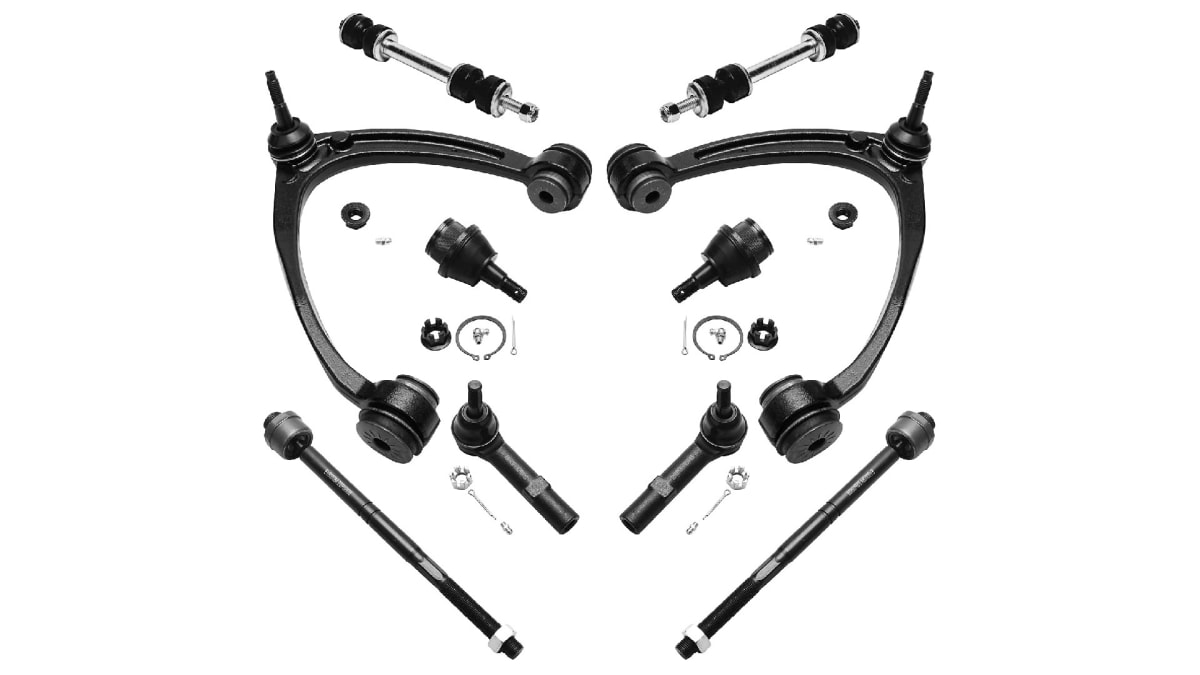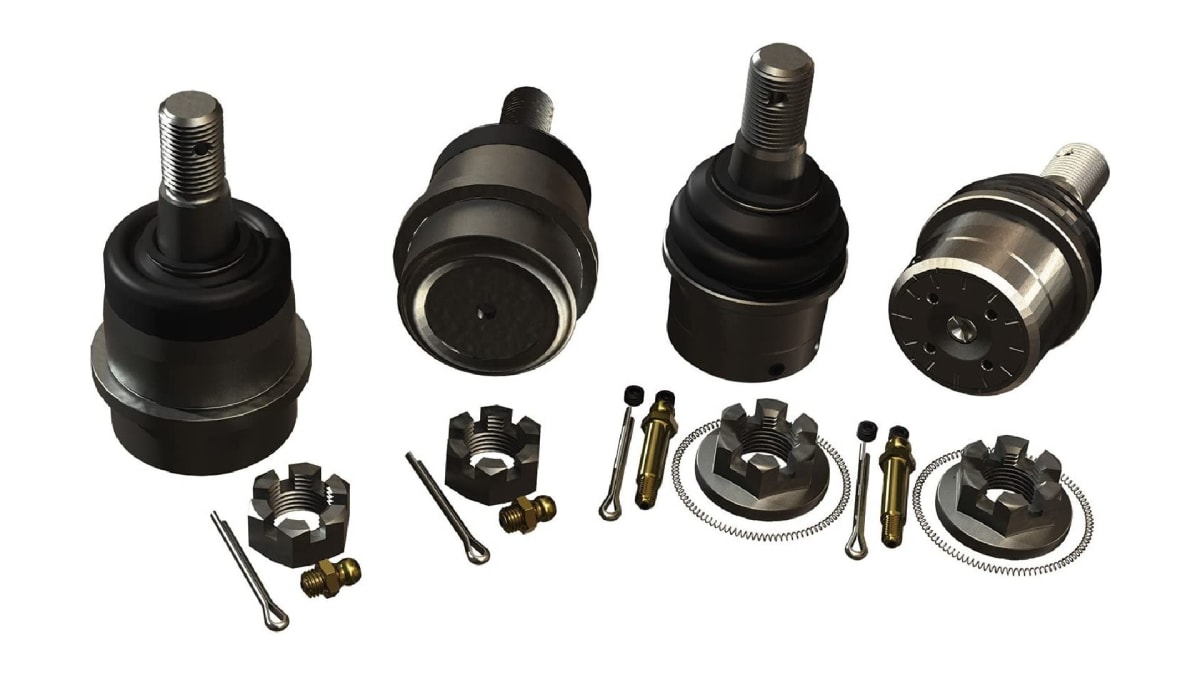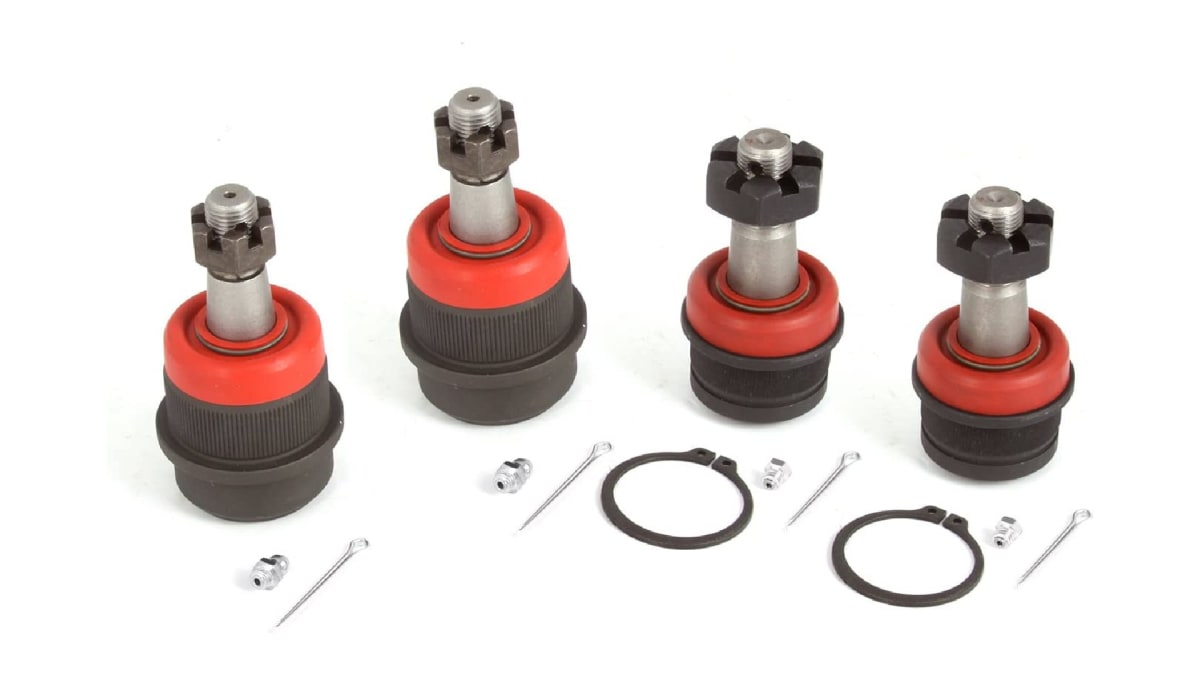Add some smoothness to your ride with the best ball joints

Autoblog is not affiliated with the brands featured in our articles, but when you make a purchase through links on our site we may earn a commission.
Want your car’s machinery to move around freely without facing unnecessary friction? Check out the leading ball joints of 2022 to help you out. For decades, ball joints have been the standard when it comes to radial joints. They’re efficient and straightforward in design, and the spherical ball has often been used in various automotive and aerospace manufacturing industries. Though their straightforward name can be deceiving, ball joints play an essential role in your everyday routine. They’re an important part of a machine, and with their help, the motion or movement of various machine parts becomes smoother and less prone to friction, which helps the machine work properly and more efficiently.
Ball joints can be an excellent investment if you like to cruise around in your vehicle, and you’ll be able to drive with ease, knowing that your wheels are securely fastened. We’ve reviewed some of the top ball joints of 2022 and also included a buying guide to help you find the right ball joints for your vehicle.
The Best Ball Joints Models of 2022 in Detail
MOOG Ball Joints: Premium pick
Buy on Amazon
Does your vehicle bounce, shudder or squeak when you hit a bump? Are your tires wearing out too quickly? Loose ball joints can cause all these problems and then some. Consider replacing your worn or damaged suspension parts with the MOOG ball joints for improved drivability and safety. These ball joints are great for when you have to fix gusher bearing or stiction issues. They’re heat-treated to meet or exceed the standards of your vehicle’s typical original equipment manufacturer (OEM) components, meaning they can last longer and run more smoothly. We’ve chosen these ball joints as our top pick because, unlike others, they’re durable enough to last for years to come, and they’re also easy to install and compatible with a wide variety of vehicles.
Pros
Easy installation process
Will absorb any impact
Compatible with various vehicle models
Cons
Joints can eventually become too tight
Detroit Axle Ball Joint Set: High quality

Buy on Amazon
Detroit Axle is a leading manufacturer and supplier of axle suspension systems for passenger cars, trucks and SUVs, and this comprehensive ball joint set gives you some real bang for your buck, supporting both common wheel suspensions as well as the most technically advanced ones out there. These ball joints are great for both today’s foreign and domestic passenger vehicles, and with this set, you’ll get two front upper control arms, two front sway bars, two front lower ball joints and four front tie rods. All parts in this ball joint set have undergone extensive testing to ensure that you’ll be able to rely on them out on the road, and if you do happen to run into any issues, the set is backed by a 10-year warranty for some extra peace of mind.
Pros
Durable, long-lasting strength
Can easily withstand high impact and fatigue
Backed by a 10-year warranty
Cons
Can be complicated to use
Teraflex Ball Joints: Easy-to-use

Buy on Amazon
This set of four Teraflex ball joints features precise, high-quality replacement joints that can offer several significant benefits that standard ball joints simply cannot. These ball joints are made of hardened steel rather than standard steel, which means they’re less susceptible to rusting, pitting and general degradation. They’re also incredibly hard-wearing and are available with heat-treated 4140 Chromoly ball studs and 1045 carbon steel housings, making them highly resistant to bending and breaking. They even feature a low-profile single lip dust seal, and the ball studs feature a 30mm diameter for the utmost precision. They’re also adjustable and easy to grasp, which is what makes these ball joints our “Easy-To-Use” pick.
Pros
Can handle oversized wheel loads
Comes with a lifetime warranty
Adjustable, easy-to-use features
Cons
Not as versatile as similar ball joints
Kryptonite Ball Joints: User-friendly

Buy on Amazon
If you have a Polaris RZR Side by Side vehicle (SxS), a quality upgrade you can make to your ride is adding a set of Kryptonite ball joints to your suspension. These ball joints are superior to factory units, and the company offers a lifetime warranty on them to back this up. Made from 4140 Chromoly studs that are stronger and more rigid than standard OEM units, these beauties might just be worth the investment. The bearing and grease fittings of these ball bearings are designed with better components for a precise fit, making the entire joint operation smoother. They can make steering your RZR solid and bind-free, and they’re even stronger thanks to the addition of a heavy-duty oversized stud that helps retain your factory steering linkage.
Pros
Compatible with various RZR models
Easily adjust according to your needs
Won’t rust or corrode over time
Cons
Not suitable for small tires
Alloy USA Ball Joints: versatile

Buy on Amazon
These Alloy USA ball joints are manufactured from 4120 and 4140 steel, one of the highest grades of steel in the industry. They have corrosion-resistant zinc plating that helps with looks and longevity, making them a solid pick to upgrade your vehicle. Each ball joint kit comes with two upper and two lower ball joints, exactly what you’ll need to replace your old ones. The ball joints themselves come with a pre-loading system that can keep things tight, and their zerk grease fittings can help you say goodbye to leaks, making it easy to lube up when the joints are installed and also helping with continued maintenance.
Pros
Offers a prolonged life
Superior to factory units
Protects against wobbling and stability issues
Cons
Can’t use for CV front axle shafts
Buying guide: ball joints
Ball joints are an essential part of a vehicle’s suspension. They enable the wheels to move and endure wear from the road, and they’re also responsible for the alignment of the wheels — if they aren’t working correctly, you’ll notice your car pulling to one side or the other. You shouldn’t take ball joints for granted, so here’s a buying guide to help you make a well-informed ball joint purchase in 2022.
Things to consider when shopping for ball joints
There are a few key factors to look for when in the market for new ball joints:
Check the brand
The first thing you should always do is check the ball joint brand. If it’s not an established, trustworthy brand, the joints’ quality can’t be guaranteed. There are many reliable ball joint brands on the market, and brands like Moog, Lemfoerder and Dorman are some of them.
Perfect fit
Not every ball joint is compatible with your vehicle. Ball joints come in different sizes and specifications, and the right ball joint is the one that perfectly fits your vehicle. A great replacement ball joint should have holes in the same location as the factory ball joint, and also have the same size rivets. This can save you the hassle of trying (and let’s not forget buying) different ball joints over and over.
Heavy-duty material
Ball joints made of heavy-duty material are more reliable and durable than joints that aren’t. Ball joints made of CNC-machined steel and aluminum are more reliable than ball joints made of common alloys, and materials like hardened or stainless steel allow the joints to withstand wear and tear.
Type
It’s essential to consider the type of ball joints when shopping around. While many cars use standard ball joints, others use spherical ones, and the shape of the joint tells you which type you’ll need to use. Standard ball joints are pretty good, while spherical ones provide better traction and control over steering and driving.
Types of ball joints
Ball joints are found in most cars and are designed to work with the vehicle’s steering linkage to ensure that the wheels turn and remain vertical. They’re referred to as “ball” joints because they essentially consist of a steel ball joint attached to a metal arm. If a car has ball joints, you’ll generally find them inside the steering knuckle, where it connects to the steering arm. The following are the two types of ball joints:
Load-carrying ball joint
A load-carrying ball joint has a spherical ball in the center connected to the two members joined together. The joint allows rotation, but when subjected to a small amount of force, it will deflect to a greater extent and absorb a more considerable amount of shock. Since it has a spherical ball in the center, the resistance to deflection or motion is not symmetrical, meaning the joint can move outward in both directions equally from the center.
Due to the geometry of the ball and the joint, the difference in deflection is not constant when the joint deflects. The spherical surface allows the joint to occupy a larger volume than if it were a planar surface of the same length. This type of joint comes in handy in the case of heavy-load machinery or vehicles.
Follower ball joint
A follower ball joint allows the axle to move up and down, forward and backward and enables the axle to turn side to side as the suspension articulates.
This type of suspension is found in cars, trucks and SUVs. It’s also known as a double-wishbone suspension because it consists of two wishbone-shaped arms that connect the upper control arms to the lower control arms. The upper arms are attached to the body at the top, and the lower arms are attached to the axle housing, or knuckle, at the bottom.
Perks of using ball joints
Ball joints come with several benefits that make them worthy of your investment.
They’re ideal for when loads are not equally distributed
The ball joint is where the inner and outer joints connect, and this offers increased motion without increased effort
Ball joints decrease friction and resistance
What are the primary components of a ball joint?
A ball joint comes with many small components, and each component performs a significant function. The primary parts of a ball joint, though, are even more essential, and you might have already guessed what they are — the ball socket and the ball.
The ball socket is where the ball will sit, and it’s the most substantial part of the joint. It can be made of steel, aluminum or stainless steel, while the ball itself is usually made of rubber or urethane. The ball is inserted into the socket, and the assembly is securely fastened to the tie rod or steering arm. As the wheel turns, the tie rod turns the ball joint to allow the vehicle to swivel and move.
Ball Joint FAQ’s
Q: How often should I change my vehicle’s ball joint?
The ball joint alone is responsible for the response and stability of your vehicle. For this reason, ball joints need replacing every 100,000 miles, or at least after every seven years of use. Delaying replacement more than this can cause serious damage to your vehicle or machinery.
Q: What’s the preferred material for ball joints?
Ball joints are made out of either steel or aluminum. Many car companies use steel ball joints with a cast iron core, and steel ball joints are more durable and the preferred choice. The only disadvantage of steel ball joints is corrosion. Aluminum ball joints, on the other hand, are used in the rear suspension of luxury cars. A ball joint made from high-quality material can ensure the longevity of your vehicle and the smooth movement of its machinery.
Q: What happens when a ball joint wears out?
The joints of your vehicle’s steering, power and suspension systems may become worn out or damaged over time, and this results in a slow response or total failure of the system. Ball joints are fundamental in helping suspension systems work smoothly, as they have an almost infinite pivoting range. In the case of your ball joints wearing out, there’d be an increase in friction which would then lead to overall system failure. If you want your vehicle’s suspension system to work properly without experiencing unnecessary friction or resistance, you should change its ball joints every 100,000 miles or as soon as you can tell a replacement is needed.



